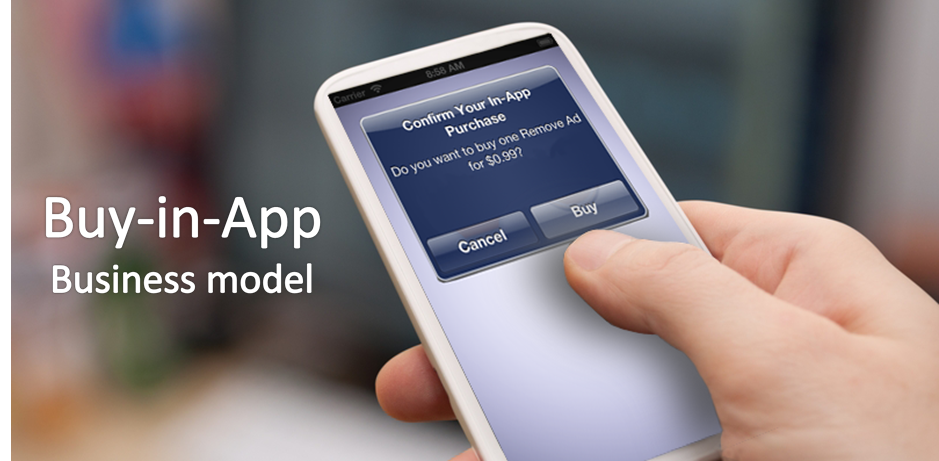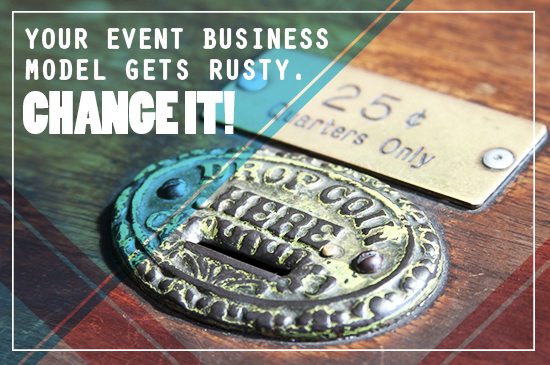Skift Take
Are you being challenged on your event revenue? See difficulty in maintaining a positive income trend year on year? Well, there might be a way to alleviate this. Stop looking at cost control (I mean, don’t go crazy, and just don’t solely focus on that), and stop adding a long tail of upsell options. Pause. Rethink.
This is a sponsored post written by Nicola Rossetti, VP of Global Marketing at etouches. More information about Event Manager Blog’s sponsored posts.
Rethink the value your event provides, be ready to deliver and pivot!
Before you see what it means and different business models you can play with, let’s start with some stories of how brands/industries were able to innovate by implementing a new model that yielded to 5 times more revenue.
The Automotive Model
It is common knowledge that the car industry, especially in the US, took a big hit in the early 2000s almost bringing it to its knees. Car companies first rethought their model back in the 60s where the ROI wasn’t made on the car sales itself, but with the purchase of replacement parts.
Then the buyer and the landscape changed, and now you often have a 10 year warranty on parts and service. How do you survive? Bump up the car price? Hmmm…. That probably won’t work in a tough competitive market: modern models are about entry price hook and retention. This understanding set the basics of the modern age car industry business model, which took-off less than 10 years ago: The LEASING. Nothing to do with the car, it is a financial product combined with retention guardrails: Limited mileage, penalties for damages, penalty if leaving the brand, etc. And it’s working!
The Printer Model
Several years ago, if you were to buy a desk inkjet printer, it would have cost you at least $400. One brand decided to apply the “hook and retention” factor to its business model. The differentiator is no longer the product, but the business model itself: let’s set that printer price at $100, and bump the specific cartridge refill to 3 times the current price.
On the shelves, looking at features, I can tell you that you are going to be very impressed by that lower priced printer. It has the same features compared to the next one and it’s 50% cheaper. A vast majority of buyers won’t make the 3 year cartridge cost plan… but the printer company has.


The App Example
First came light, then the iPhone, and then the App. An already first revolution came with it: the pricing for the masses. From the beginning the model success was placed on massive adoption, thus volume: with a 99 cent (made easy to buy from a UI stand point) price point, it is a no brainer.
Let’s buy the app! Worst case, I lose a dollar. You instantly perceive the ROI. With this growing young app market, the model quickly became obsolete. Unless you hit the top 100 downloads, you’ll never be able to make money (as an App creator) at this price point. But what about selling it for $20? If that is the front price, you are going to take a serious hit in number of purchases. It’s not economically viable. Hmm….


What if the app was free and you could buy options within the app? There you have it: the buy-in-app model. It became so successful in a very short time frame that Apple had to change the app categorization in order to feature clearly a “buy-in-app” warning for customers!
How Does That Apply to Events?
From tradeshows to symposiums, networking events to user conferences, association meetings to customer focus sessions, there are already a lot of scenarios when it comes to financing the event and if it is a business, making it profitable. Let’s take a few examples.
Trade Shows
The classic approach is geared toward exhibitors, whether they pay for traffic or in more subtle ways for hosted buyers (note: this is a business model for trade shows that started early 90s). The hosted buyer concept not only provides the attendee a free pass to the show, but their entire expenses (hotel, flight) are covered by the organizer. The tradeoff is that the hosted buyer goes through an extensive qualification and screening process, and must qualify/attend a certain number of meetings with exhibitors in relevant categories.


This model forces the organizers to clearly understand the needs of their audiences and puts the hard work on their plate for this critical mission. However, it pays off when they do it right and when the exhibitor sees the value in the lead that they are provided with, thus they are ready to pay a premium price for this.
New models are pushing this even further: active profiles can be purchased by exhibitors almost like a reverse RFP process. I saw models where the organizer takes shared revenue on the appointment paid by the exhibitor directly to the attendee!
Conferences
Conferences are often playing on both sides: price per attendee and sponsor packages.
But like the buy-in-app model, there are more and more reverse models where sponsors engage through a lot of “affordable” actions and given the results, are asked to pay to collect additional results. A now very established kind of “buy-in-app” model for events is the award business: the goal is to attract lots of participants (applicants) at a very low entry price to create a pipeline of sponsors and upsell them. In this model, the organizer makes sure you have enough categories, say 10 minimum, with 3 winners per category ( 1st / 2nd / 3rd ); do the math, you have 30 “winners” thus sponsors you can upsell to!
Event data
No matter what your event business model is, there is one aspect that all events have in common: they carry an incredible amount of information like who meets who, content attendees like, session they attended, messages they post, etc. This is enough to build a data set that is worth a lot of money. Not just for your own business intelligence, but from a big data perspective. Something you may even consider to sell?
In Conclusion
Lots of industries have been bold enough to rethink their models. Often the sky is the limit when creativity is there.
Look at trends, feel free to transpose and test. The next business model will open a new road. If you lead it, you will make a mark in history; you could also have serious advantage against your competition, or purely grow your business big time.
Remember: quality, hook, retention.
Feel free to share your experiences, success and failures in creating new business models for events!







